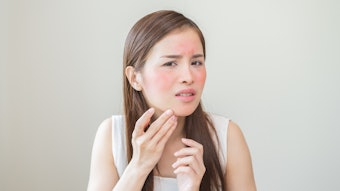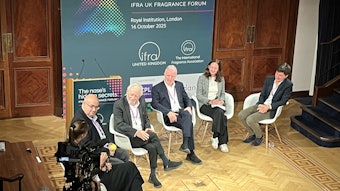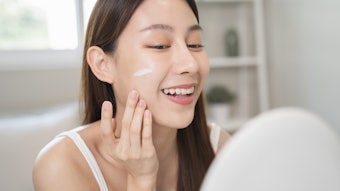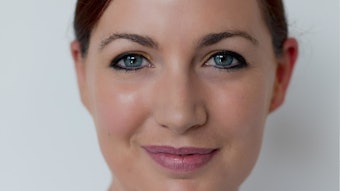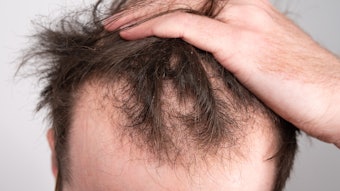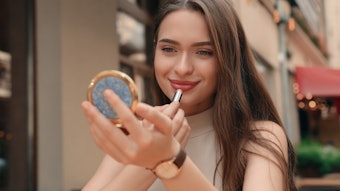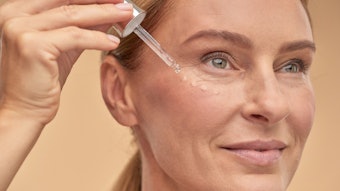
International beauty giant L'Oréal has developed a topical skin care formulation containing a crystallized live probiotic to reverse signs of skin aging via microbiome modulation – an exciting and notable advancement in skin care, experts say.
Recently published, the international patent was initially filed just eight months after L'Oréal's 2023 acquisition of Denmark-based probiotic and microbiome research firm Lactobio.
Targeting Skin Microbiome Diversity
L'Oréal wrote in the patent that the formulation incorporating live probiotic microorganisms could reduce, even reverse, signs of aging and photodamage and improve overall skin appearance – a category with "huge cosmetic and economic interest." The formula did this by modulating the skin microbiome found in aging skin, the company said.
Referencing a 2022 study by Howard, et al., showing that skin microbiome diversity increased with age while the abundance of Lactobacillus decreased, L'Oréal said the skin microbiome could be considered as playing a role in skin aging. This age-associated decrease in Lactobacillus was also likely associated with a decrease in bacteriocin-producing Lactobacillus, the company said, allowing for the increase in skin microbiome diversity.
With this in mind, the company's active topical formulation reportedly contained a live, isolated, viable Lactobacillus to increase the abundance of Lactobacillus in the microbiome of aging skin and, by metabolism on skin, produce metabolites to ultimately decrease overall microbiome diversity – reflecting a "younger skin microbiome."
"In the present invention, viable lactic acid bacteria, producing antimicrobial metabolites and organic acids, are applied topical in a lipid formulation to modulate the skin microbiome and reverse aging. Applying viable bacteriocin-producing microorganisms has surprisingly shown that these can improve skin appearance and decrease the sign of aging," L'Oréal said.
After 28 days of use, several skin aging parameters had been reduced, according to the patent, with wrinkles and pigmentation reduced by 5% and sub-epidermal low-echogenic band (SLEB) thickness and TEWL by 2%. The formula had also been shown to:
- increase dermal density by at least 5%;
- skin hydration, complexion radiance and smoothness by more than 10%; and
- skin elasticity by over 2%.
Following 56 days of use, L'Oréal said these parameters improved even further.
Crystallized Delivery and Product Format
Importantly, L'Oréal said the topical formulation had been developed so the live microorganism was viable on skin for at least four hours after application, ideally 12 hours, using it in a crystallized form, preferably dried into a crystal of cryoprotectant selected from salts, proteins or polysaccharides.
The company said the live microorganism also had to be isolated – cultivated as a monoculture – and could be incorporated with a secondary live lactic acid bacteria, if desired. The goal was to incorporate live bacteria in the composition at 0.01% to 5.00% w/w, though it could go to 20.00% w/w. And, ideally, the formula contained around 1×10⁵ to 1×10⁹ CFU of viable bacteria per gram of composition, L'Oréal said.
The composition could be formulated as an emulsion, mist, paste, talc, powder, lotion, foam, serum or semi-solid formulation for use in the treatment, alleviation, suppression, prophylaxis and/or prevention of skin aging.
The Expert Eye: Novel Approach with Solid Scientific Foundations
Three independent experts were contacted to understand the potential of L'Oréal's patent for future skin care developments.
"The focus on viable microorganisms with active metabolism on the skin is a notable advancement in skin care formulations," said Oliver Worsley, Ph.D., CEO and co-founder of skin microbiome testing firm Sequential.
Active metabolite production on the skin, Worsley said, was something traditional lysates and ferments, or postbiotics, could not achieve, so this invention offered "exciting potential."
Barbara Brockway, Ph.D., cosmetics and personal care scientific advisor and owner of Barbara Brockway Consulting, said supplementing a distressed microbiome with live microbes was certainly a "fascinating area to explore," particularly as knowledge on the gut-brain-skin axis evolved.
"We know the skin microbiome changes as we age, so L'Oréal's innovation in delivering live microorganisms in a crystallized dried form represents a significant breakthrough for supporting aging skin and more." But it was the company's use of crystallization and cryoprotectants to deliver the live probiotic that could be considered truly "novel" for cosmetics, Brockway said.
While the method built on decades of scientific foundations, Brockway said application in skin care remained "highly commendable" and represented an "important step for probiotic cosmetics."
Theresa Callaghan, Ph.D., cosmetic claims and scientific affairs expert and owner of Callaghan Consulting International, agreed the crystallization of the probiotic was an "innovative approach" for cosmetics as it was a technology "not yet widely used" in the category. Importantly, Callaghan said it could potentially address industry's biggest hurdle in using live bacteria: stability.
Crystallization offered improved shelf-life stability for live probiotics and could also reduce the need for cold-chain storage, making distribution easier and less costly, she noted. The potential challenge, however, would be the reactivation and efficacy of the probiotic once applied to the skin. This warranted further research, she added – looking into the long-term effectiveness and safety of crystallized live bacteria in skin applications.
Hurdles to Bacteria Beauty Scale-up
So, could this formula work for L'Oréal at scale?
"Scaling live bacteria skin care formulas is technically achievable," said Worsley, "but there are challenges with production, scale-up, regulatory and markets." Keeping bacteria alive and effective through manufacturing, storage and use, for example, is complex and costly, he said, and navigating regulatory and market requirements not easy. However, he added the long-term benefits outweighed the short-term challenges in bringing this product to market.
Callaghan agreed that stability, regulatory hurdles and cost were the biggest challenges, as well as formulation compatibility – ensuring the bacteria didn't interact with other ingredients in the formula and impact texture, scent or intended efficacy.
Finally, Brockway said the "main hurdle" she considered to scaling up was overcoming strict safety regulations around microbes in cosmetics. Current standards imposed limits on how many and what type of microbes could be present in cosmetics and required preservation systems to pass the challenge test so cosmetics remained hostile to living bacteria, she said.
However, U.S. indie brand Mother Dirt has already negotiated the safety regulation landscape here, so there is a prior art that L'Oréal, and others, should be able to follow moving forward.
